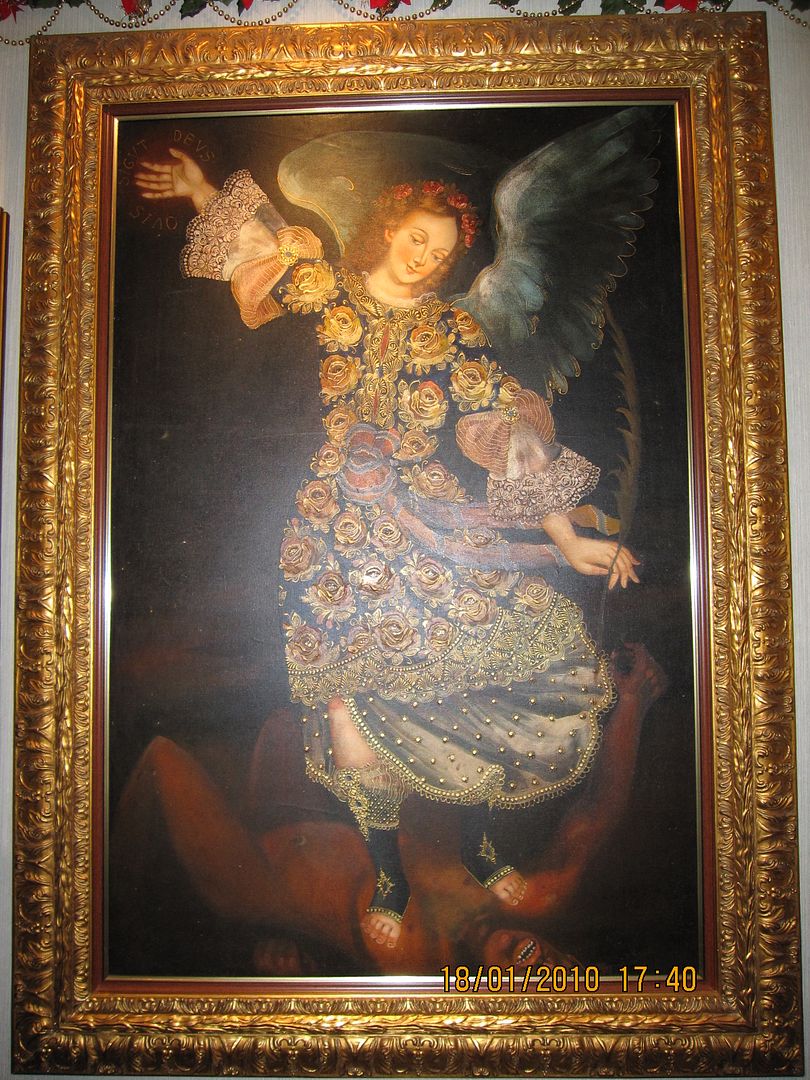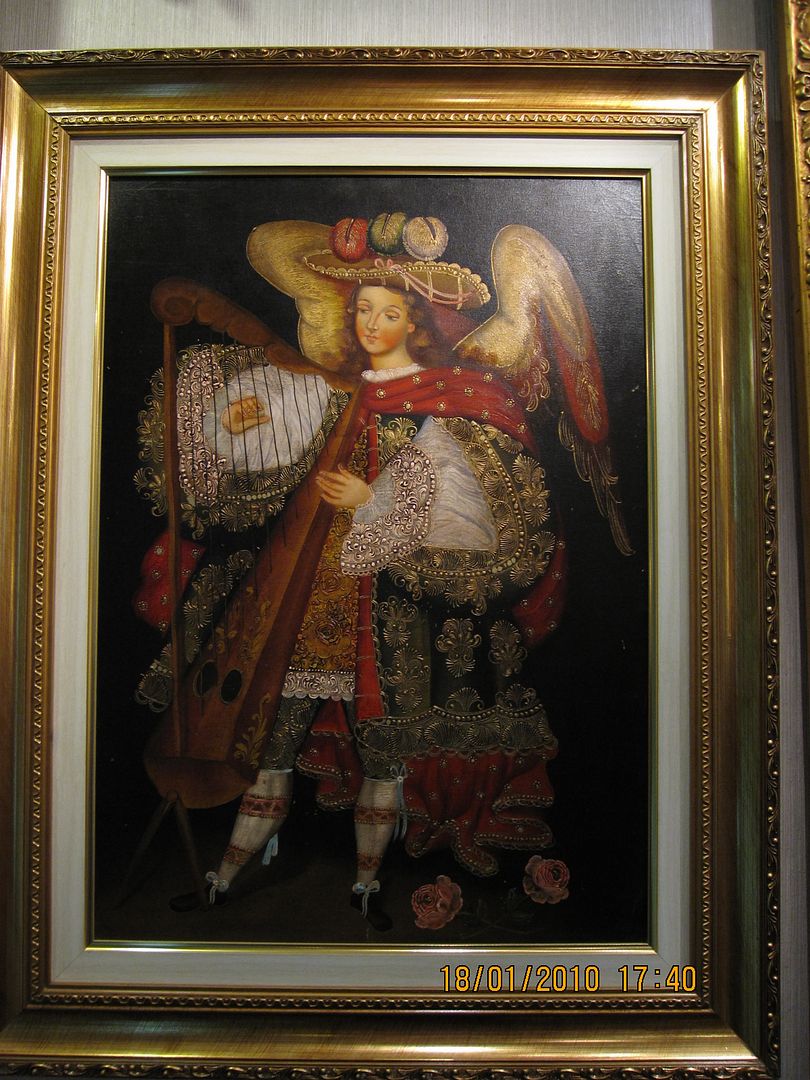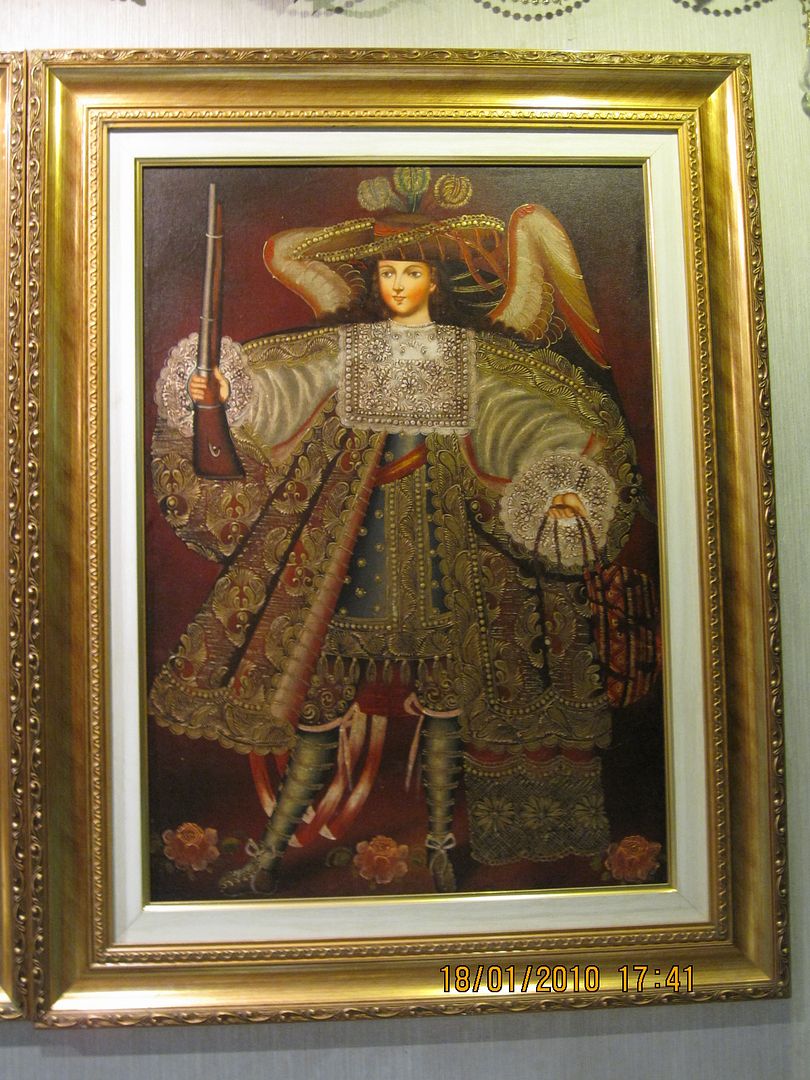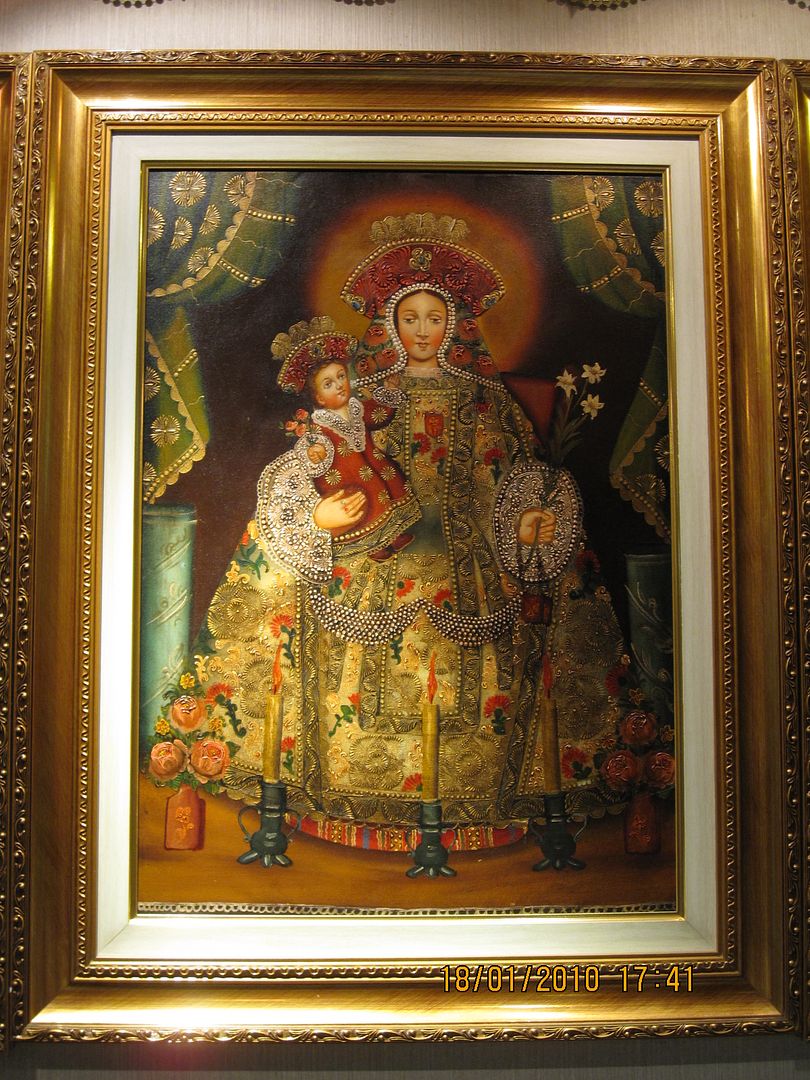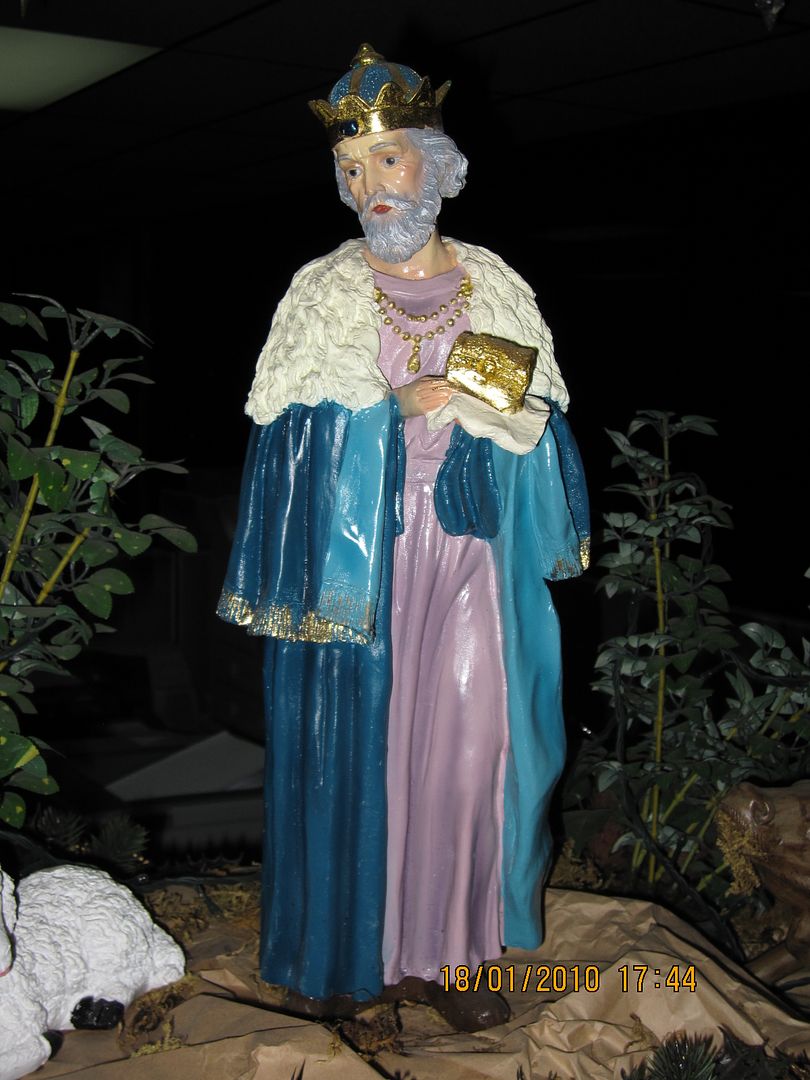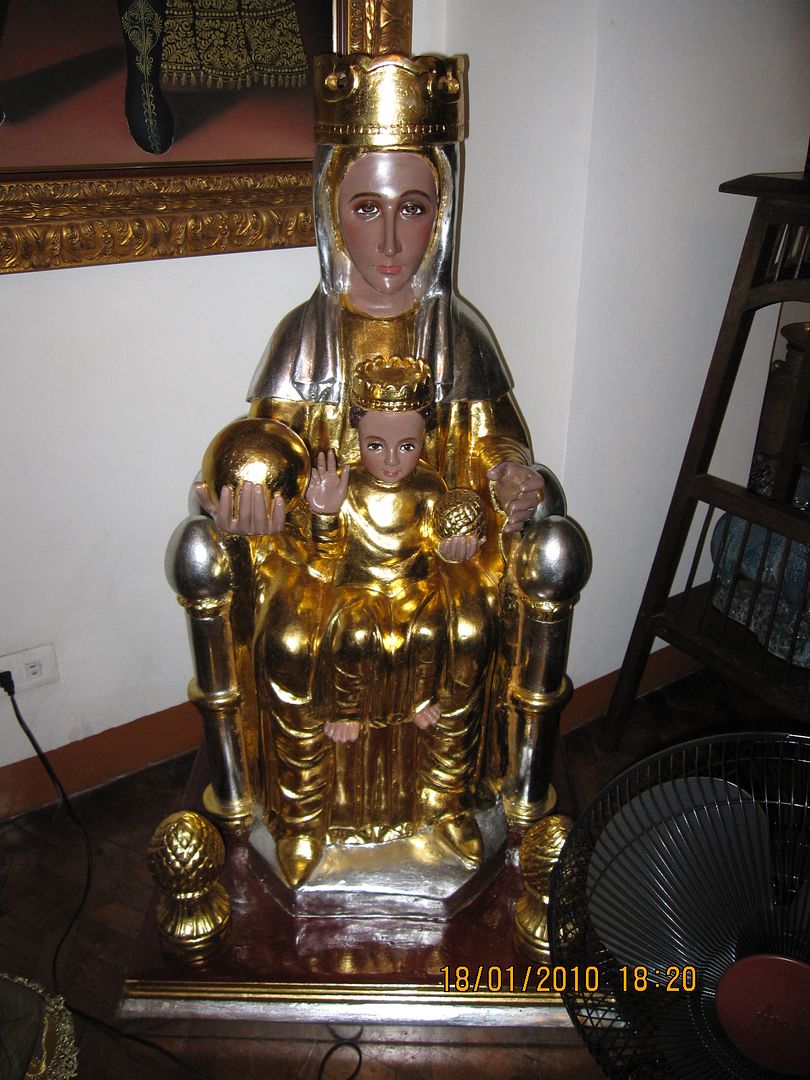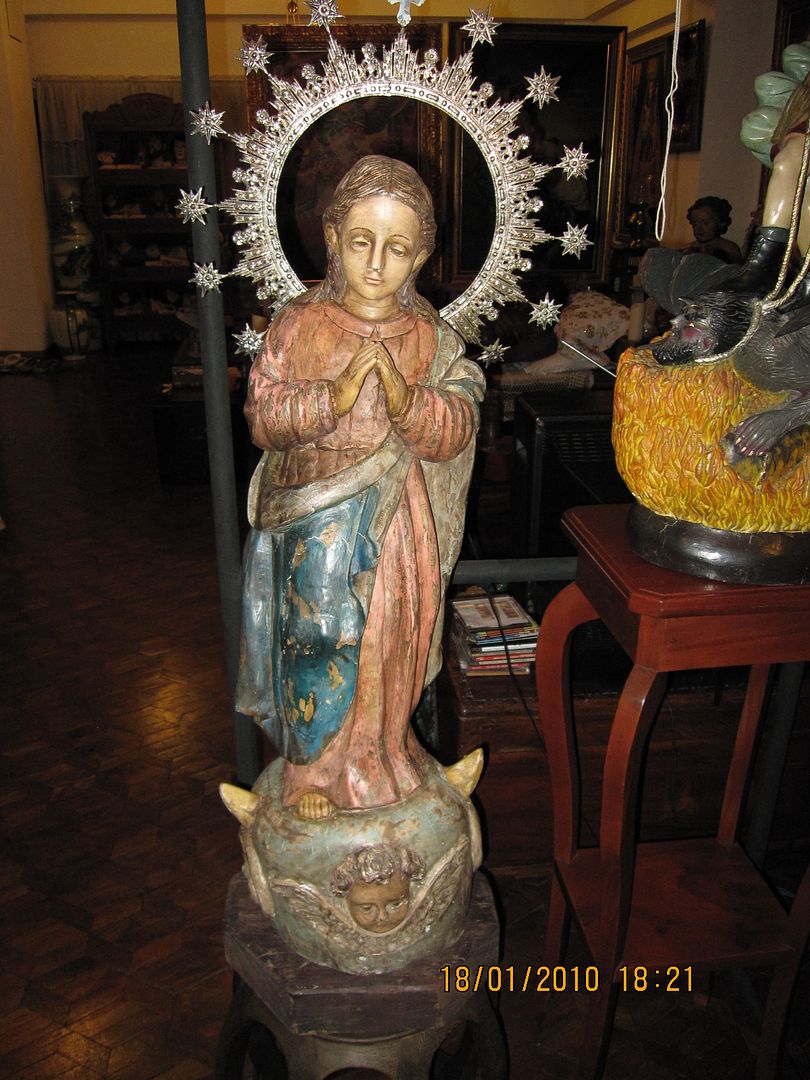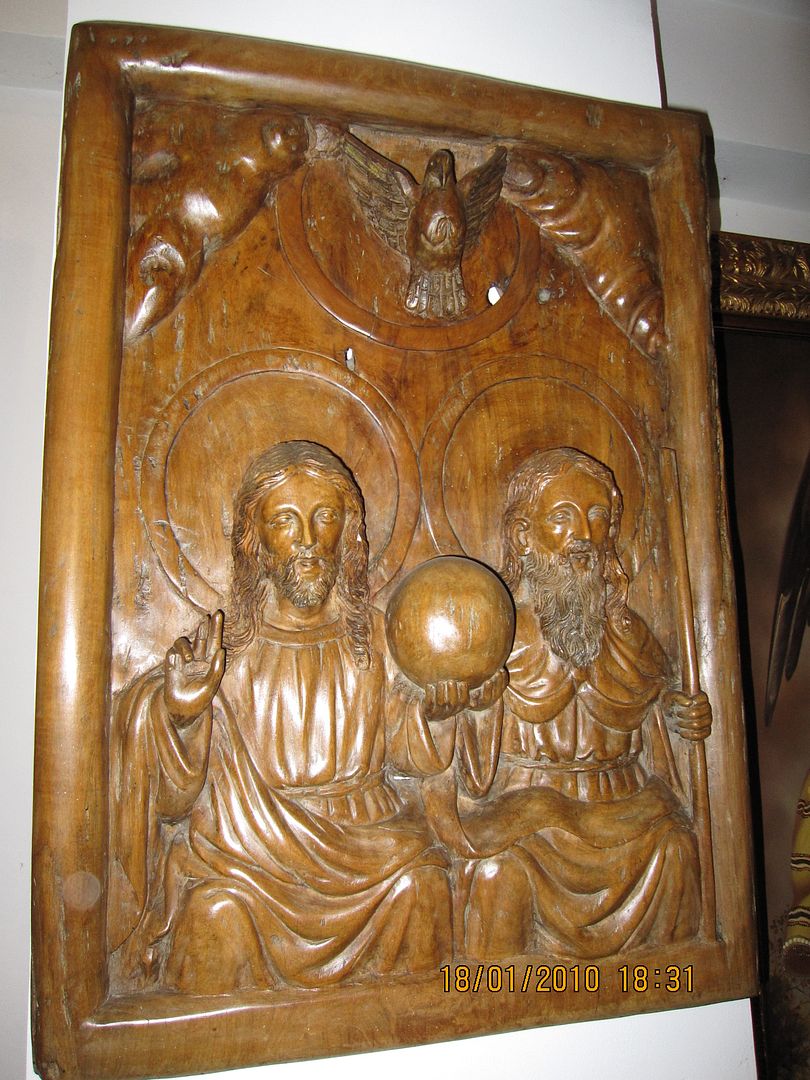After
a lengthy and inexcusable hiatus, and in reparation for that sin, we continue
our Cebu series (see CXXVIII – The 1730 Casa Jesuita and CXXIX – The Yap-Sandiego House) with a simultaneous continuation of our Santo Addicts series
(see CXV – Alex Castro).
I
had known Mr. Louie Nacorda for some years, first online via the Flickr photo
sharing site, which then led to his graciously helping me to arrange my visits
to the Casa Jesuita and Yap Sandiego houses when I visited Cebu on a business
trip in January 2010. More than finally
meeting Louie in person at that time, what was even more significant for me was
that, like the previous subject in this series Mr. Alex Castro, Louie was a
certified santo addict.
After
he had accompanied me to those two aforementioned heritage houses, our next
stop was the Pacific Online (a systems service provider) office in the city,
which Louie was heading up at that time.
Most santo addicts would like to bring over their addiction to their
workplaces, although for the vast majority of them that would be impractical or
even downright violative of office rules.
Louie being the big boss here meant that he could get away with this,
therefore upon entering their offices I was greeted by a not-small image of
Saint Anthony of Padua.
Elsewhere
in the office was a smaller Saint Vincent Ferrer with a nicely-embroidered
Dominican habit.
Beside
it was an Our Lady of (perhaps) the Most Holy Rosary, surrounded by numerous
reliquaries.
This
being Cebu, which began the original devotion to the Santo Niño in the
Philippines, I was not surprised to see many representations of the Holy Child
in the office, including folk sculpture,
and
classical sculpture,
this
last one nicely complemented by a backdrop depicting God the Father.
If
some of those paintings appeared to be vaguely in the so-called “Cuzco style”
of the 16th to 18th centuries (which expanded beyond
Cuzco and Peru to what is now Bolivia and Ecuador), you would be warm, as
elsewhere in Louie’s office were more religious artworks in this style,
including several triumphant
and
musical angels
and
even a couple of combative ones.
Other
paintings in this style were hung from other walls in the office
including
the Blessed Virgin Mary and the Child Jesus,
the
Annunciation,
and
the Coronation of the Blessed Virgin Mary as Queen of Heaven and Earth, with
adoring saints.
The
Christmas season having just ended when I visited, I should have expected (but
did not) to still see a tabletop Nativity tableau, which Louie will probably
keep fully-decked-out all the way till Lent.
As
the tableau included the full retinue of characters, e.g. wise men,
and
shepherds
and
animals,
Louie’s
solution to finding space for everyone involved setting it up lengthwise
above and across several filing cabinets that bisected the office’s open area.
Not
only did this set-up manage to accommodate everyone, but it also allowed Louie
to employ a monstrance-like object to represent the Star of Bethlehem
which
totally overwhelmed the Child in the manger.
Office
hours being over, we next headed off to Louie’s residential apartment elsewhere
in the city.
Unsurprisingly,
the entrance was guarded by a santo.
He
did clarify that while the apartment was indeed residential, he did not
actually live there. Remembering that he
was a santo addict, I just about figured out what was really going on. And when I saw this cabinet packed with
disembodied heads
I
realized that the residents were not living humans but yet more santos. Therefore human-welcoming and tasteful
seating arrangements like these
should
not fool the visitor, as just out of view is
a
life-sized Santo Entierro reclined on a daybed.
So much for the nap that I wanted to take on it.
Elsewhere
in this apartment was all manner and size of santo art and sculpture, including
a small Saint Michael the Archangel in an old urna,
a
tabletop ensemble of Saint Isidore the Farmer
a
preacher-saint holding an outsize crucifix
a
Gothic-style Virgin and Child (in the manner of, e.g., Our Lady of Montserrat)
an
angel posted on the apartment’s street-facing balcony (no doubt to keep
cat-burglars out)
and
another Saint Michael the Archangel with a frightful-looking devil underfoot.
The
well-laid-out space in this Cebu apartment allowed for multiple renditions of
the Holy Child, including one with supporting angels
a
more traditional Cebu-Flemish version
one
that was part of folk retablo ensemble
one
that held a spade
and
two more that I had just run out of adjectives for.
There
were practically as many renditions of the Blessed Virgin Mary, in addition to
the Gothic-style Mother and Child that we had seen, including a young-looking
Immaculate Conception
a
small image in a wooden urna
two
tabletop-sized versions that might be Our Lady of Remedies and another
Immaculate Conception
and
a no-nonsense life-sized processional Dolorosa decked out in the Spanish style.
If
Louie’s office featured Cuzco-style artwork on its walls, it would be
ridiculous if his apartment had hardly any.
Therefore there is even more to be seen here, with three triumphant and
joyous angels in various guises
and
a fourth one beside a Mother and Child in a not-really-Cuzco style.
There
was also a classical-style Immaculate Conception
and
an Our Lady of Antipolo
The
wooden relief art form was represented by this combative horseman – was it
Saint James? –
and
a folk rendition of the Holy Trinity.
Apart
from the seating that we saw at the start of this visit, Louie’s apartment also
had other pieces of furniture in the same antique Filipino style, including
barrister-style 1930’s bookcases filled with books
and
non-books
and
a sideboard of the same period.
There
was also a large chest used as an occasional table to display more artifacts
and
on a far wall were Art Nouveau-style wooden frames holding images of the only
non- (but perhaps future) santo in the apartment, the santo addict himself
to
whom we are extremely grateful for the rare opportunity to visit.
Originally published on 7 February 2018. All text and photos (except where attributed otherwise) copyright ©2018 Leo D Cloma. The moral right of Leo D Cloma to be identified as the author of this work has been asserted.









